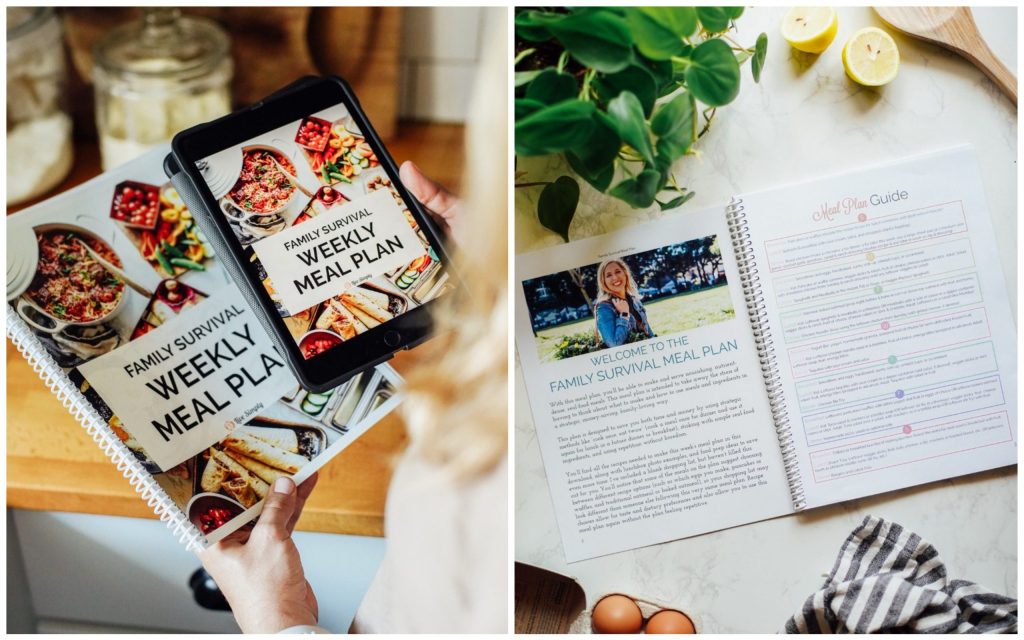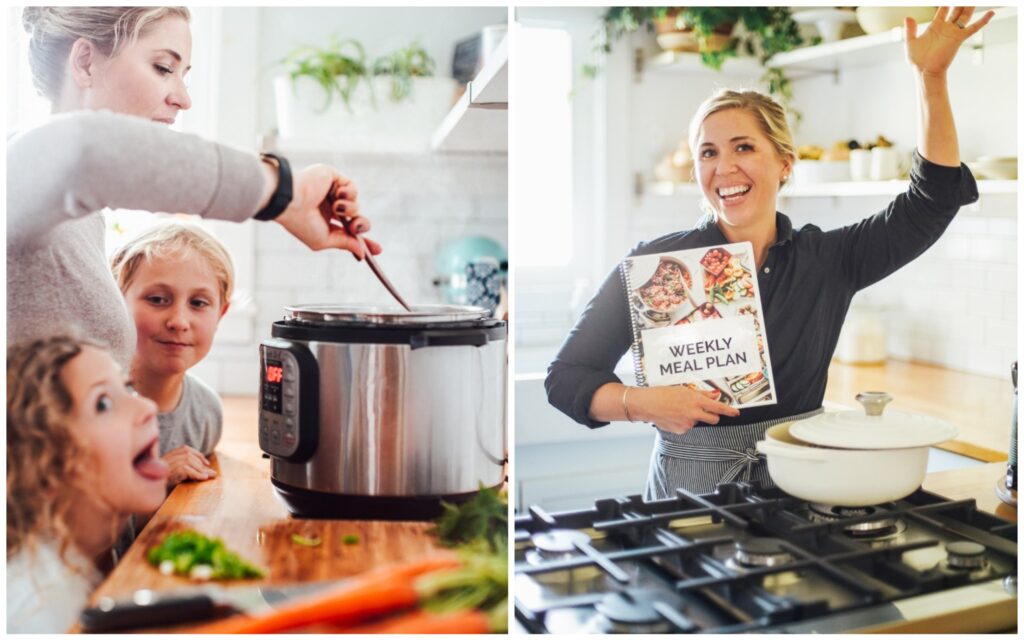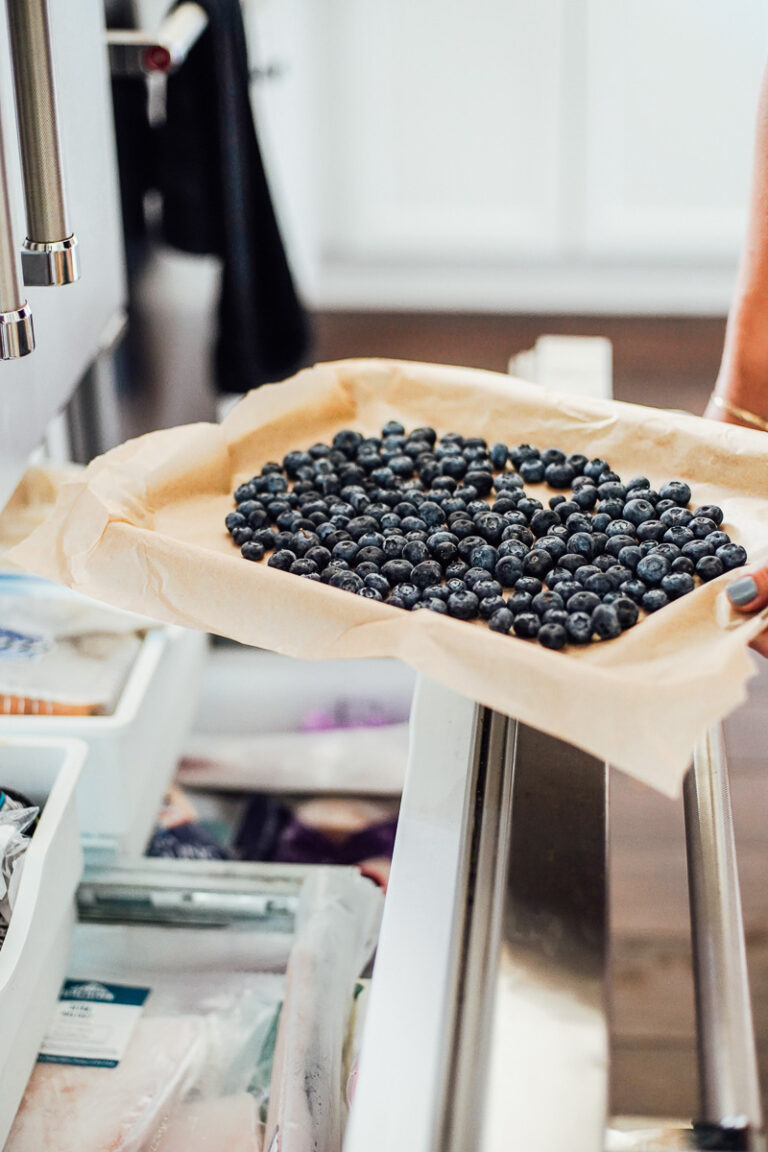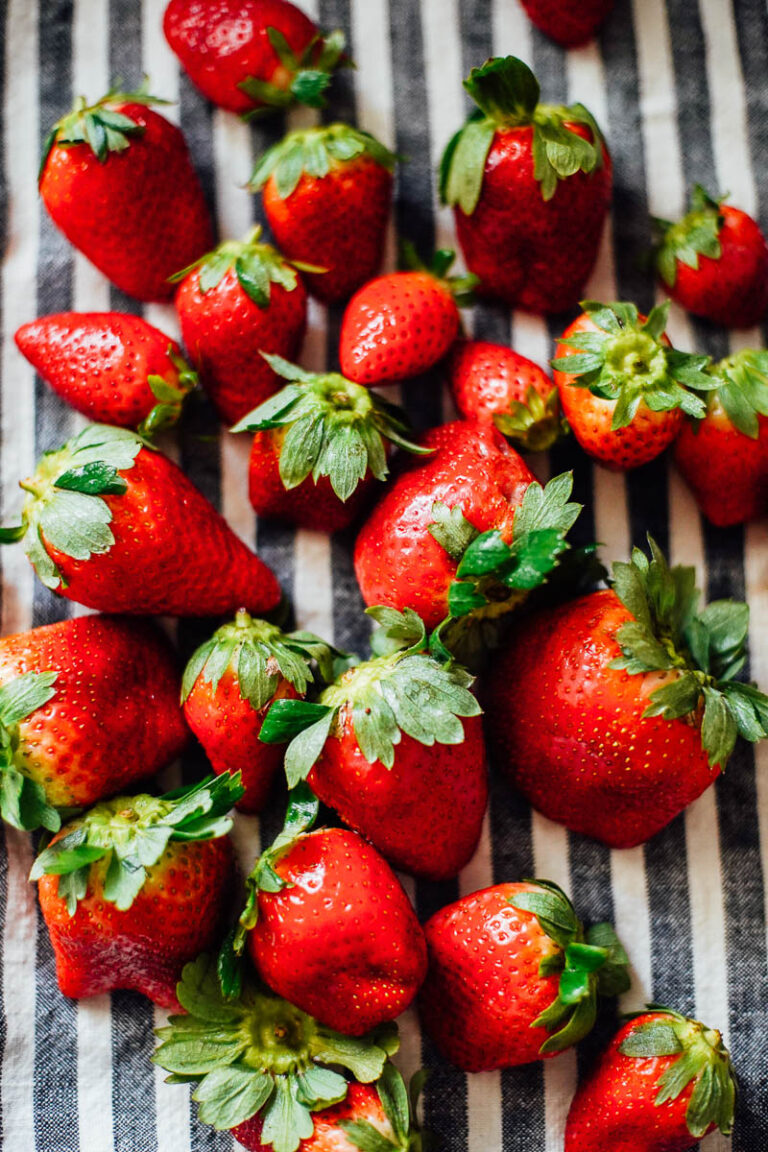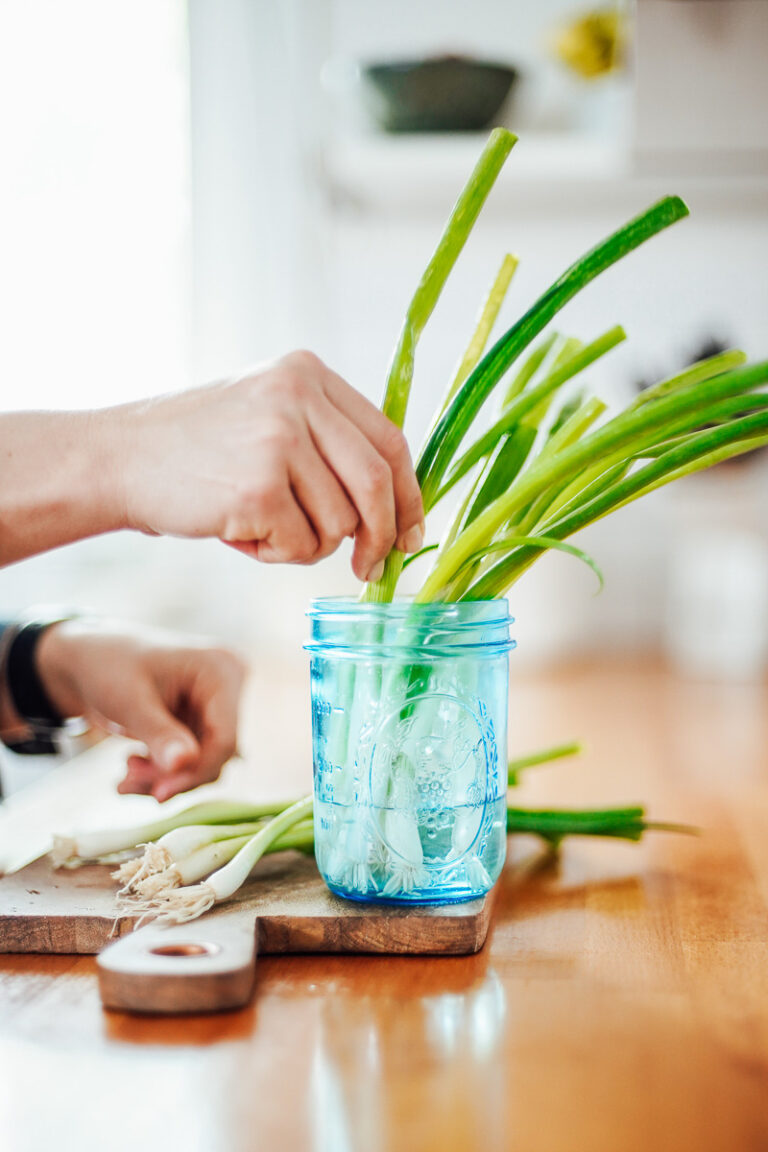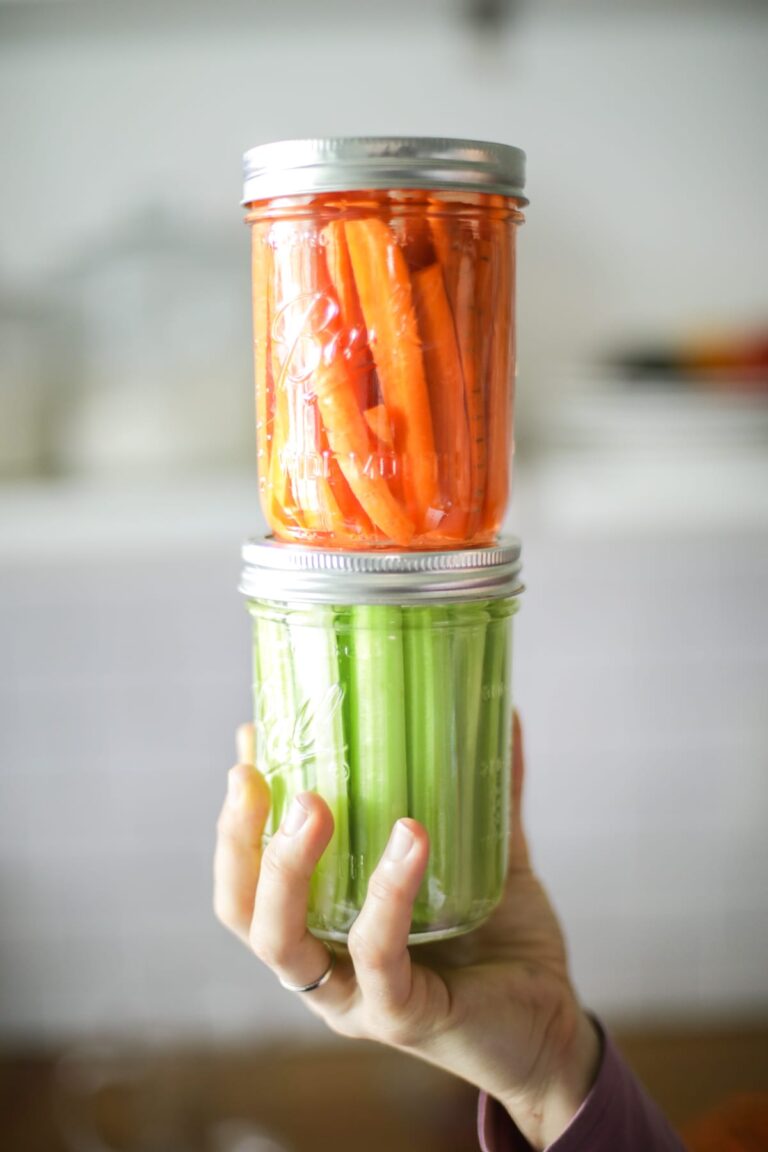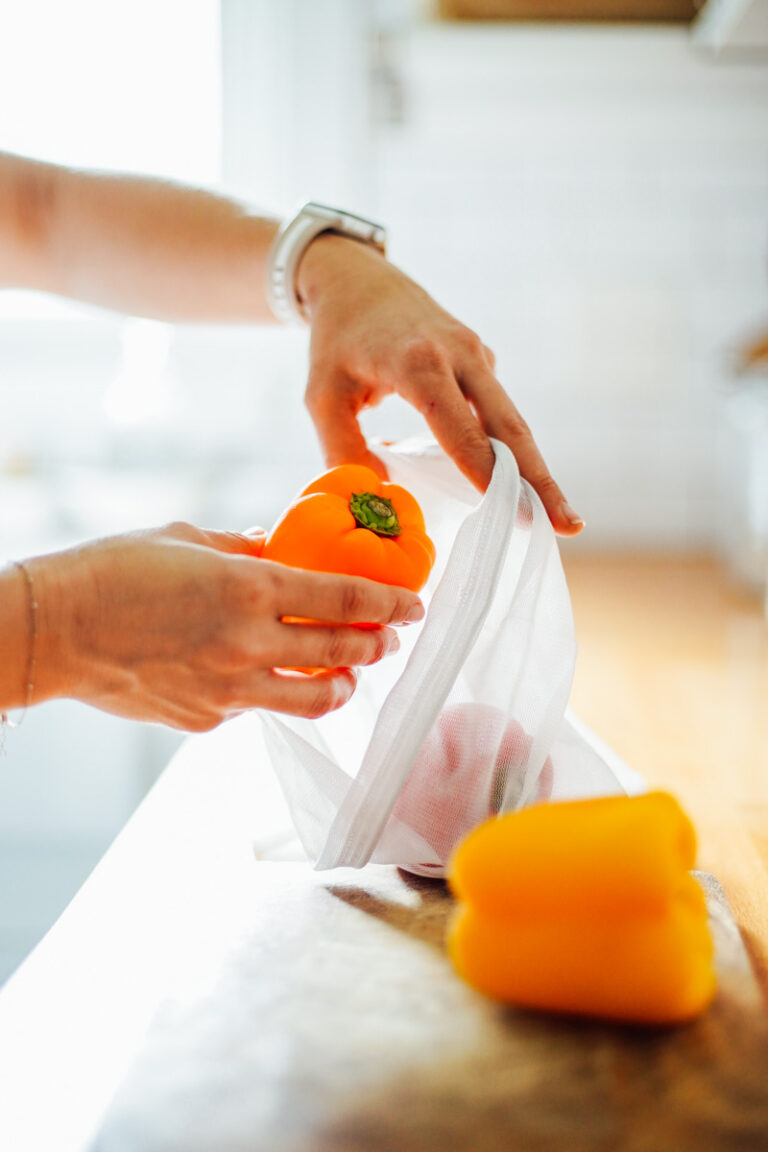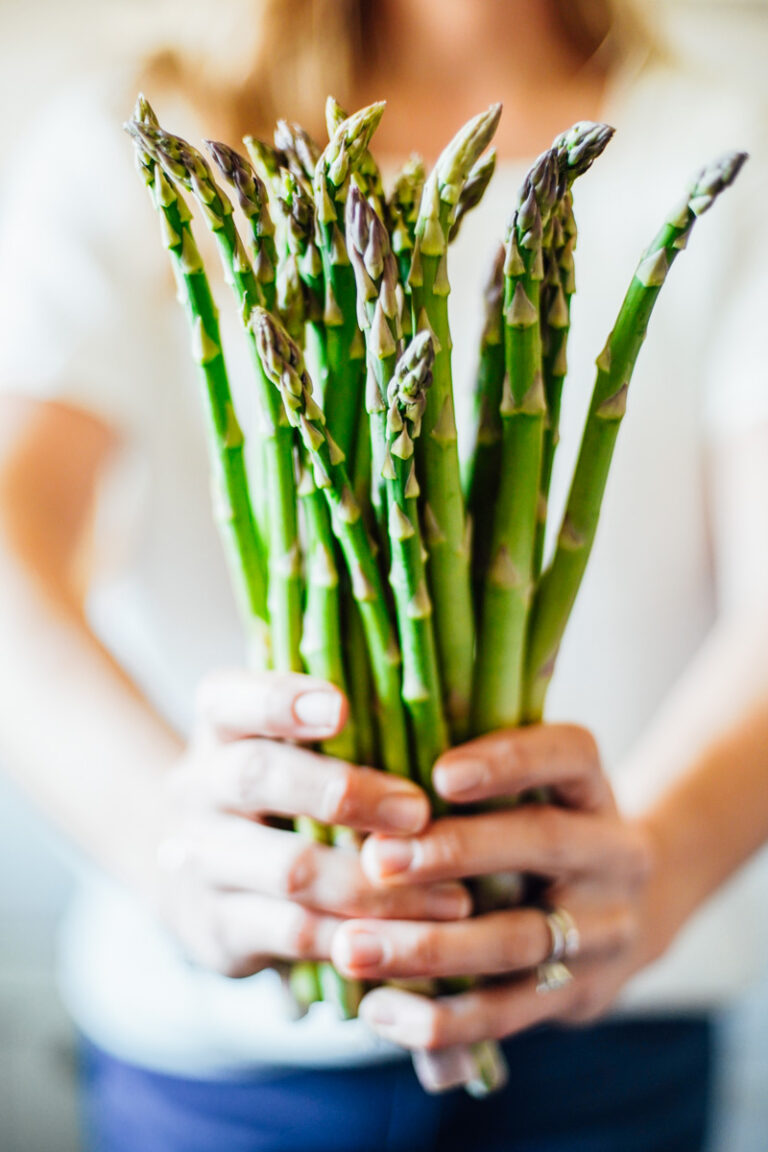I think we’ve all been there. You buy a bunch of produce or other ingredients, with the best intentions when you’re at the store or market. By the next weekend, you’re tossing half the ingredients in the trash. We all know this is wasteful, but how do we keep this from happening?
Here’s how to keep food fresh and avoid waste each week.
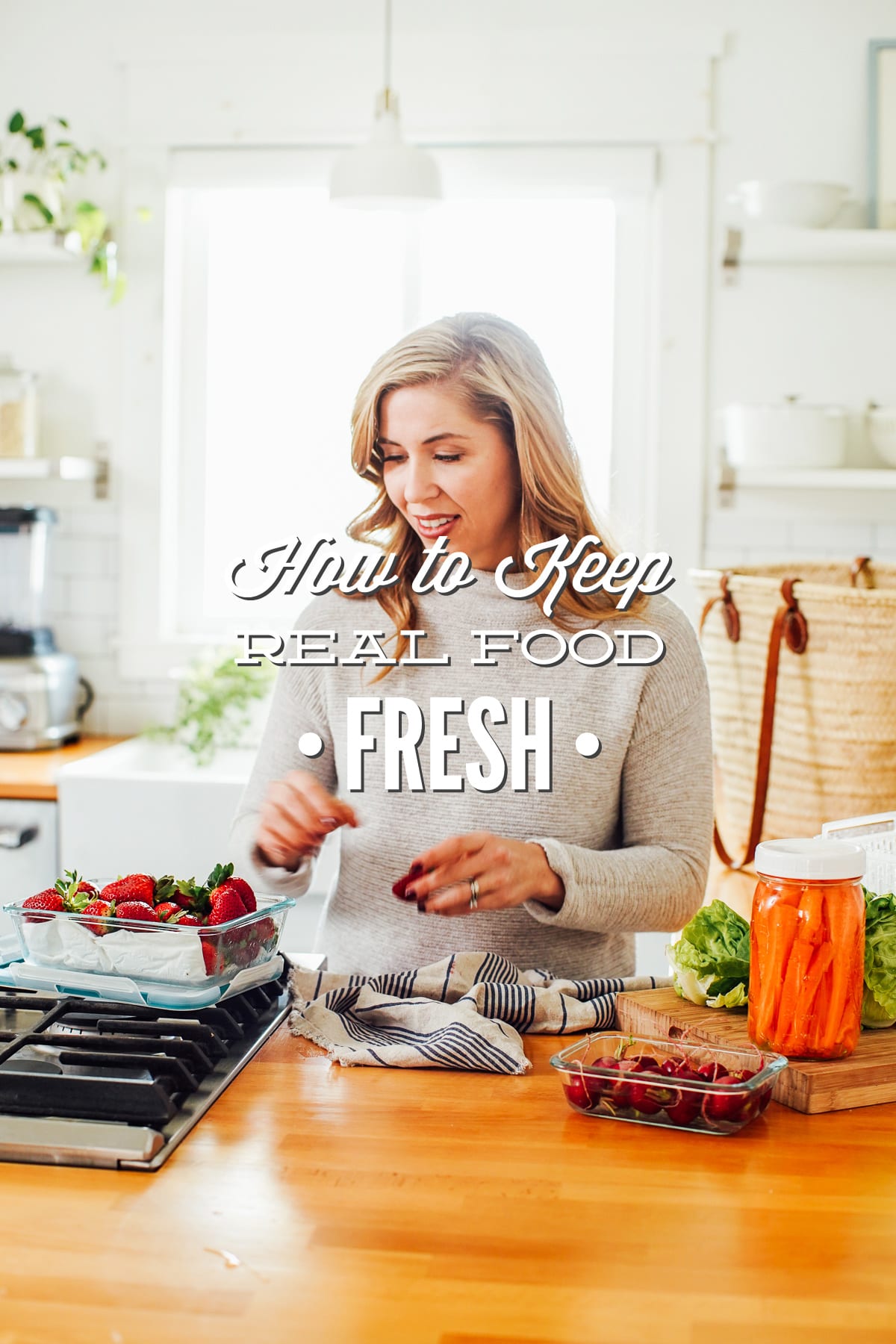
Want to Save This Article?
Enter your email & I’ll send it straight to your inbox. And you’ll get new recipes & tips each week.
To help you save money, time, and food, I’ve put together my best tips. Tips you can begin using right now to help you avoid the food waste and ultimately save money on your groceries (because when you’re using what you bought, you’re saving money). Let’s put an end to the rotten lettuce.
6 Ways to Keep Food Fresh and Avoid Food Waste
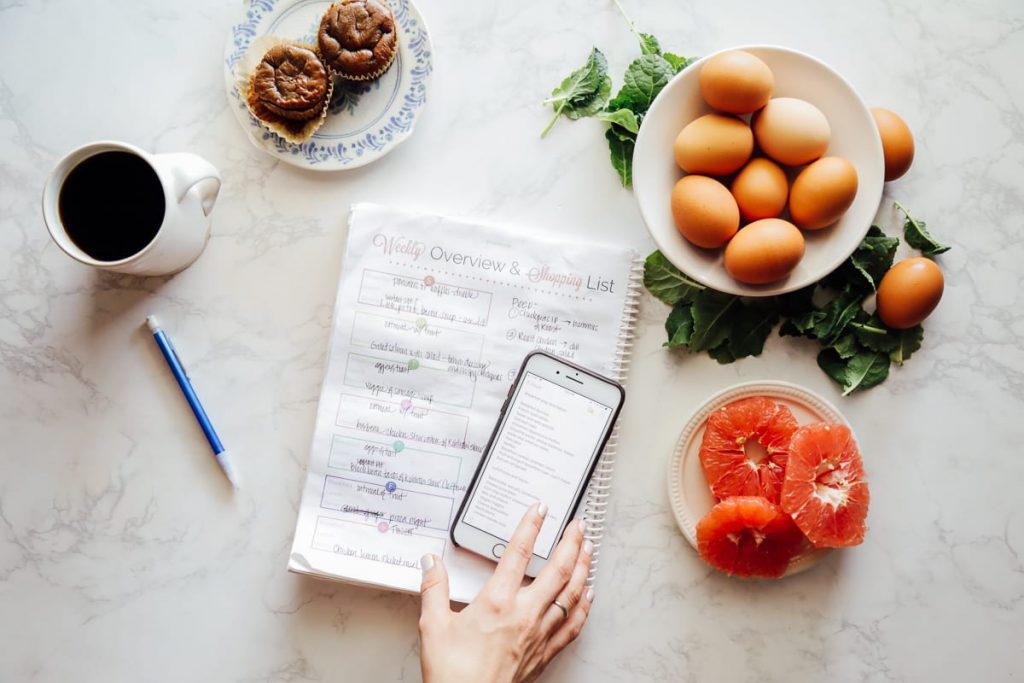
1. Meal Plan
Meal planning is essential if you’re going to make the most of your ingredients/food. If you’re new to buying ingredients and preparing real food, I recommend planning what you’ll make in advance, then visit the store or market.
If you’ve been at this real food thing for a while, you may want to shop based on the season and what’s on sale (this is my method for shopping during farmers’ market season). My guess is that you already have a collection of meals to rely on, so you’ll know how to put ingredients to use and build meals. As you shop, think about how you’ll use the ingredients filling your basket/cart. Then, when you get home, write down exactly how you’ll use these ingredients to build meals.
Without a plan, you’ll probably forget (if you’re like me) how to use your ingredients and that means some of your ingredients will probably rot in the fridge.
When planning, think about the ingredients you need to use first and plan accordingly. For example, a delicate veggie (like eggplant) may need to be used early in the week but a hard veggie (like a squash) could probably be used toward the end of the week.
Want a ready-to-use meal plan with time-saving, money-saving recipes? Click here for the Family Survival Meal Plan.
meal plan solution
Family Survival Weekly Meal Plan
The Family Survival Meal Plan is the fast-track way to put real-food meals on autopilot and break out of mealtime survival with the easy-to-follow meal plan, time-saving food prep and cooking methods, and the real-food recipe book that make nourishing your family one less thing to stress about.
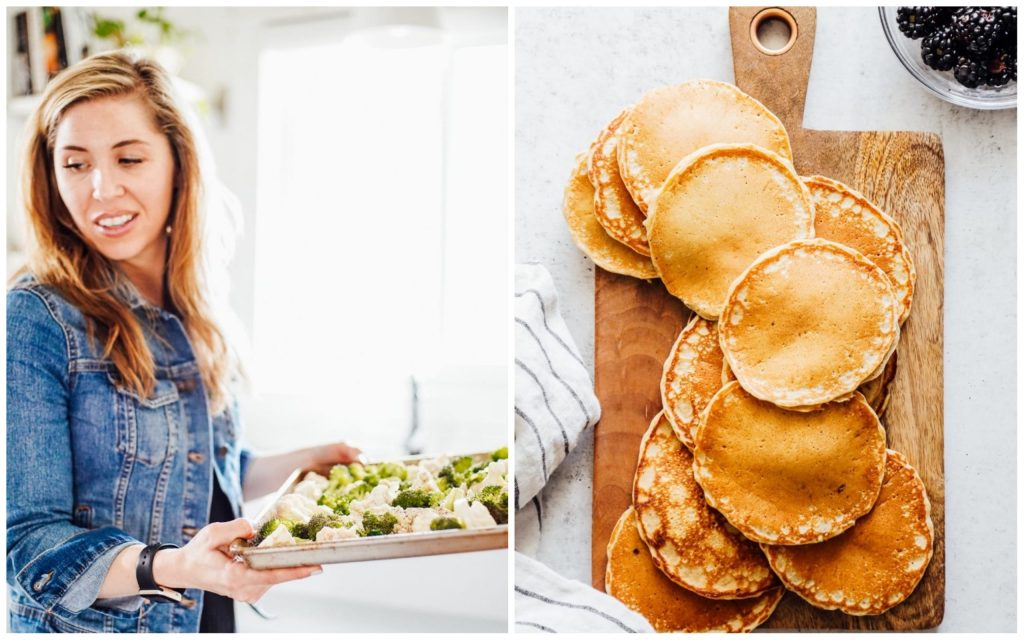
2. Prep and Store Food Properly
When you get home from the market or store, store it properly. Take the produce out of any packaging and place it in the crisper drawers or storage containers.
I like to chop some veggies on the spot: carrots, celery, bell peppers, and cucumbers. These veggies make great snacks (pair them with homemade healthy ranch dip or hummus) and may also be used for other meals throughout the week.
For other veggies, knowing how to store them properly is key! Below you’ll find tips for storing some of the trickiest veggies.
Don’t let it rot!
FREE PRODUCE GUIDE
21 Storage Hacks to Keep Your Produce Fresh
Produce Storage Tricks

Buy & Use Frozen Produce: One way to save money is to buy frozen produce, like frozen broccoli, peas, and stir-fry mix, instead of fresh veggies. Not only are these veggies cheaper, you also don’t have to worry about them rotting quickly. Roasted frozen vegetables are an incredible side dish with many meal possibilities. Add frozen berries to healthy yogurt bowls for an easy breakfast.
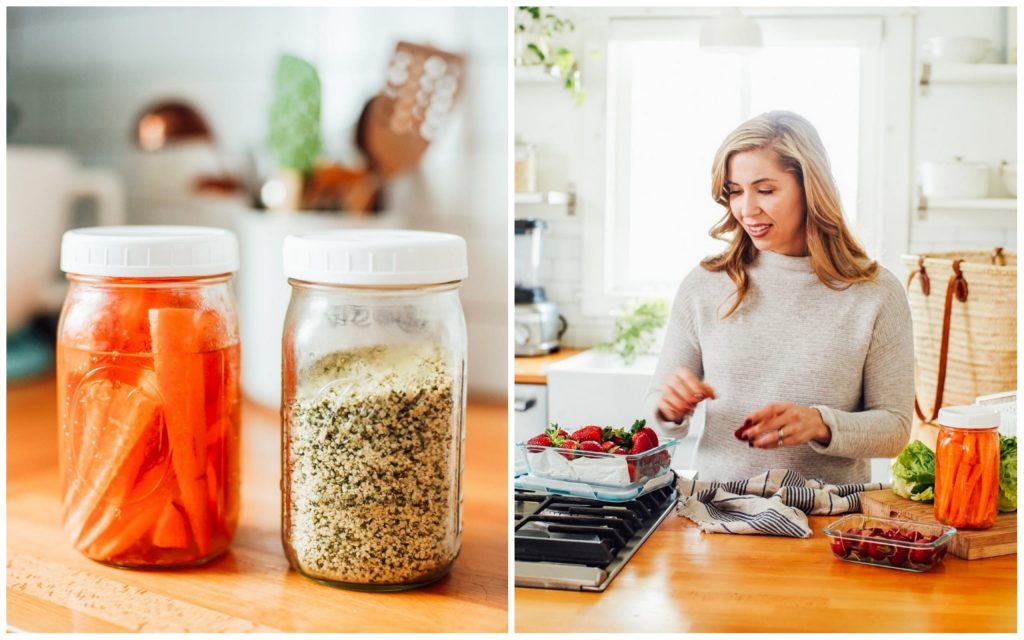
3. Organize Your Fridge
When your fridge is organized, you can clearly see what’s inside which means you’re more likely to actually use the food in your fridge. When you’ve taken the time to organize your fridge and store your food properly, you’re less likely to end up throwing away half your veggies at the end of the week.
How you organize your fridge may look different than how I organize my fridge. Find a “system” that works for you. For me, grouping like things as much as possible is helpful. I talk about this system in the video.
The goal isn’t perfection. The goal is a functional fridge. When food is visible and appealing (not rotting), you’re more likely to use your ingredients. See how I organize my fridge here.
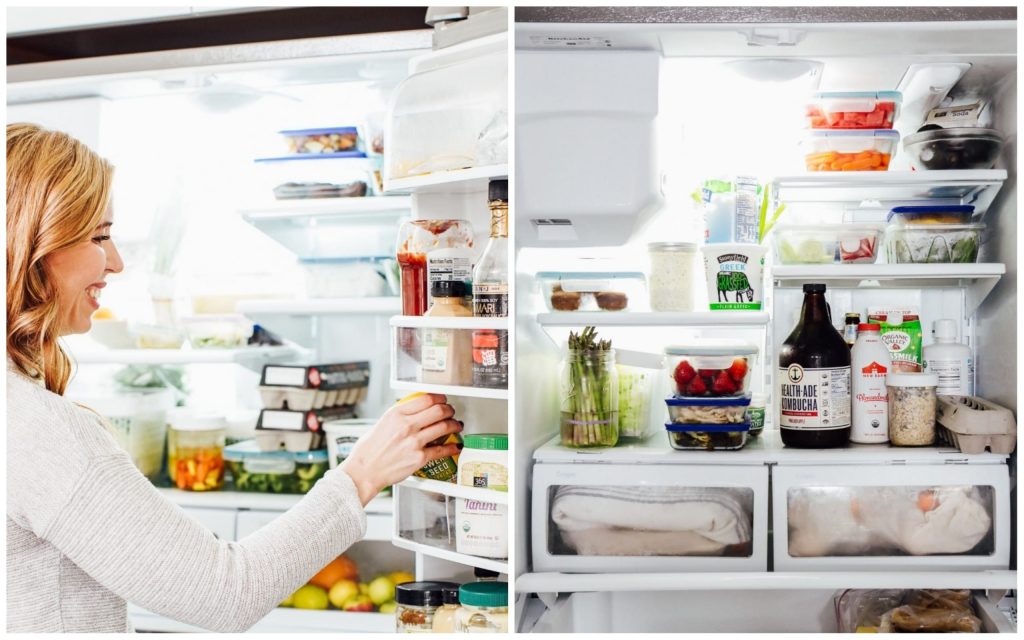
4. Keep Food Visible In Clear Containers
This means using storage containers that allow you to see food. My favorite containers, which you’ll see in the video, include:
- Ball Mason Jars (with plastic white lids): I purchase my jars at Target. I find the wide-mouth jars work best for food storage. The metal lids are awful for storage. Trust me, buy the plastic lids! You can find the plastic lids at Target.
- OXO Produce Keepers: I use the boxes for storing greens. I prefer the medium-size box. You can also find these at Target.
- Snap Ware or OXO (Snap Ware-Like) Containers: You can also find these containers at Target, sold individually. These come in small and large.
- Pyrex: I have the 3-cup size and a 6-cup container (perfect for large berries or soup). You can find these on Amazon in a set or individually from Target (3 cup size and 6 cup size). I have 6 3-cup containers and 1 6-cup container.
- Reusable Produce Bags: These are great for the produce drawer or shopping.
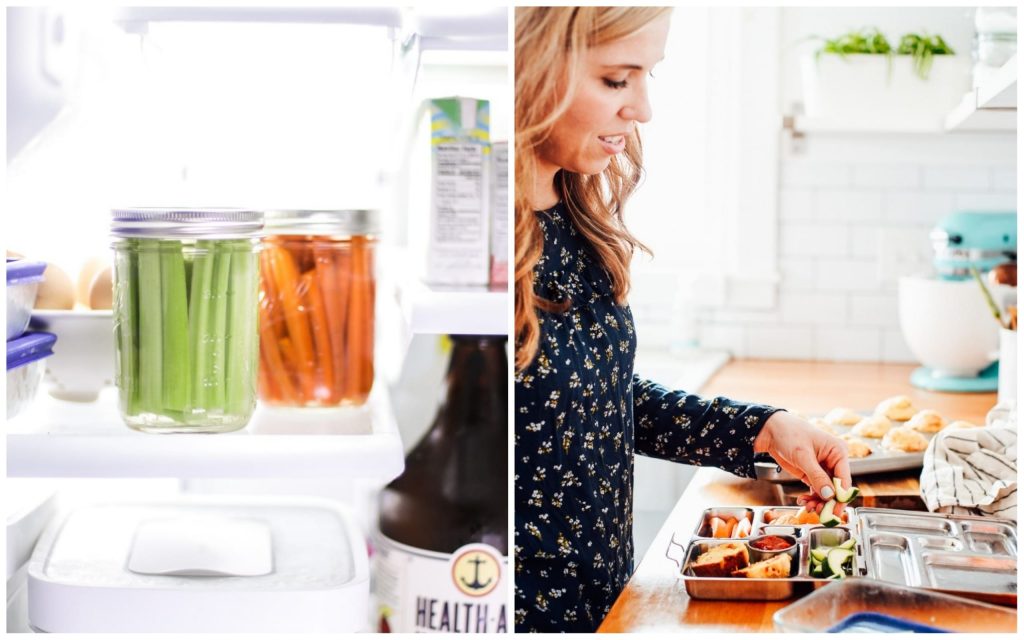
5. Mid-Week Check
I like to perform an inventory check on Wednesday evening, while I’m cooking dinner. This only takes a couple of minutes. I’ll take a peek at how the ingredients are doing. Does anything look like it needs to be used ASAP? If so, I may rearrange my original plan and put that ingredient to use tomorrow.
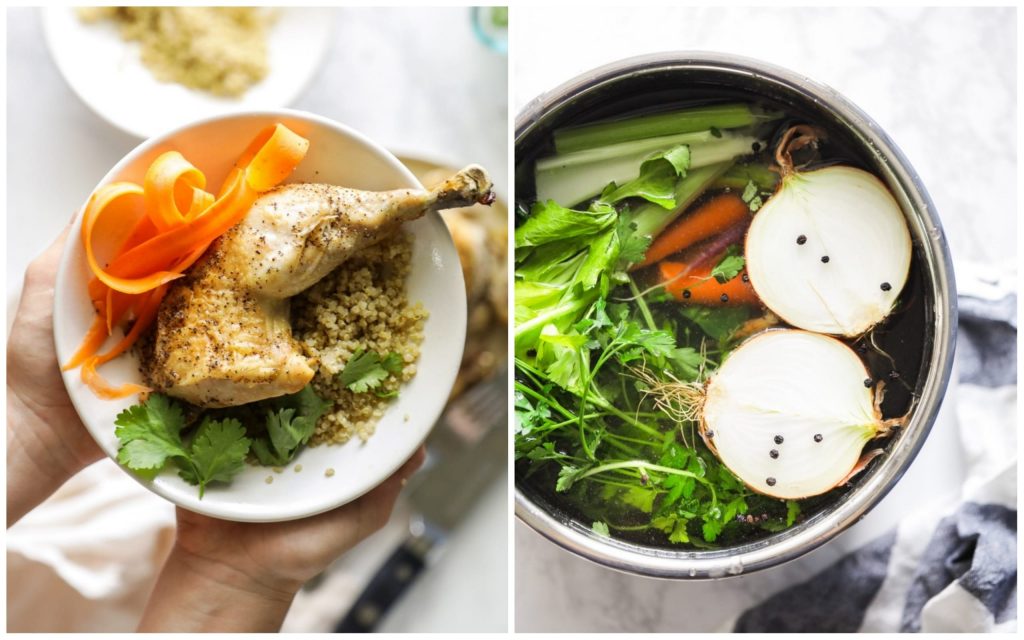
6. Know How to Use Leftover Ingredients
At the end of the week, you’re probably going to have a few extra ingredients. Maybe that’s a few extra carrots, celery sticks, or a few bananas. It’s important to know how to use these ingredients. Here are few ideas:
- Make homemade tomato soup with leftover tomatoes and bell peppers.
- Use extra bananas to make almond flour banana bread, flourless almond banana muffins, sourdough banana bread, or einkorn banana muffins.
- Make zucchini chocolate muffins with leftover zucchini.
- Turn extra tomatoes into Mediterranean Greek Meal Prep Bowls for next week’s lunch.
- Steam zucchini and freeze it to toss tin smoothie.
- Make veggie broth with veggie scraps.
- Use extra fruit for a healthy yogurt bowl topping.
- Make fried rice with leftover veggies and eggs. Use this stove-top fried rice recipe or make fried rice in the Instant Pot.
- Turn leftover yogurt into a fruit greek yogurt dip and combine with leftover fruit.
- Use leftover herbs to make a creamy herb chicken dinner.
Take the Guess Work OUt of meal planning
Free 64 Rotational Meals Ideas Cheat Sheet
Breakfast, lunch, dinner, and snack recipes to rotate week after week. Put healthy meals on auto-pilot.

